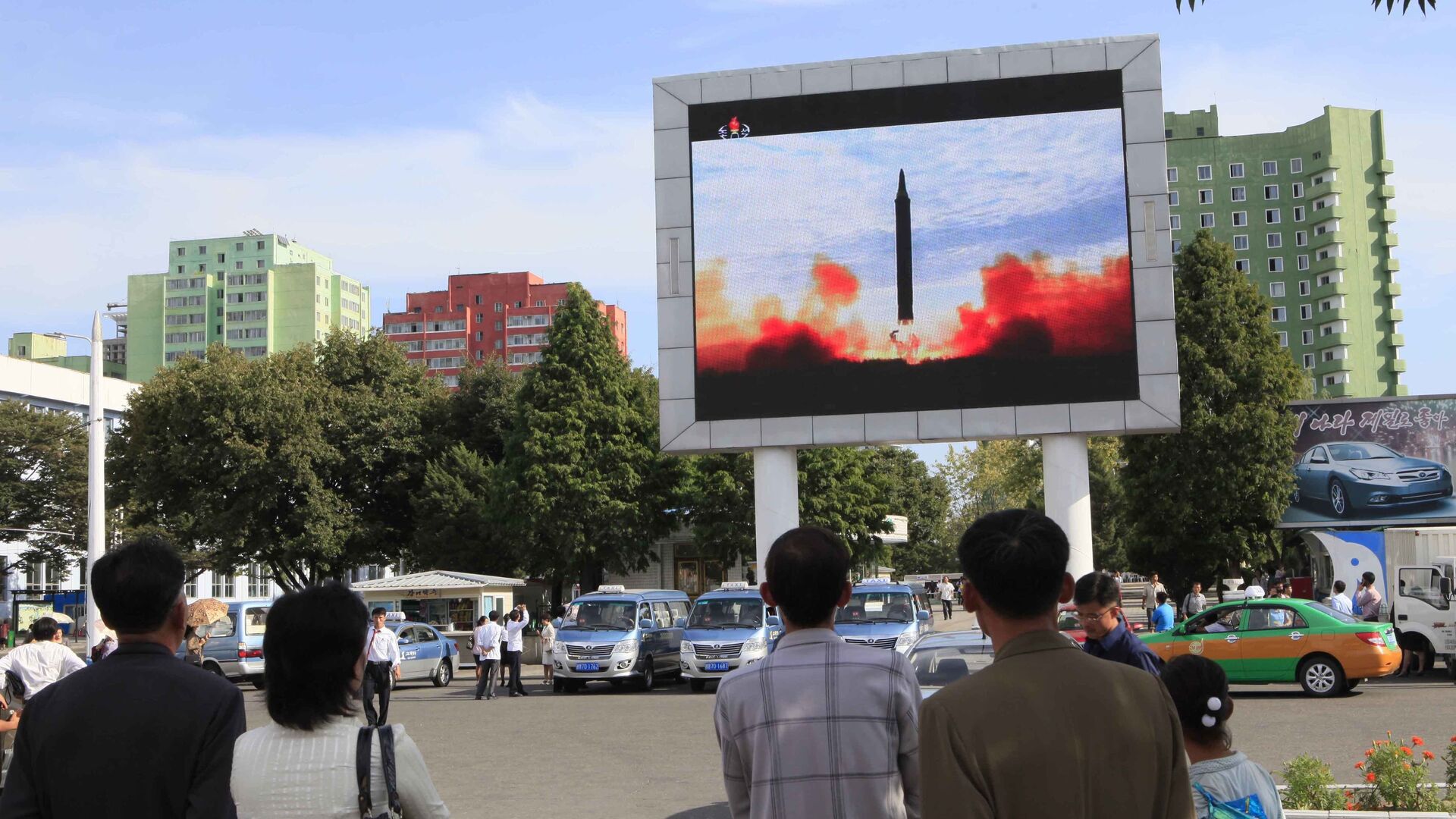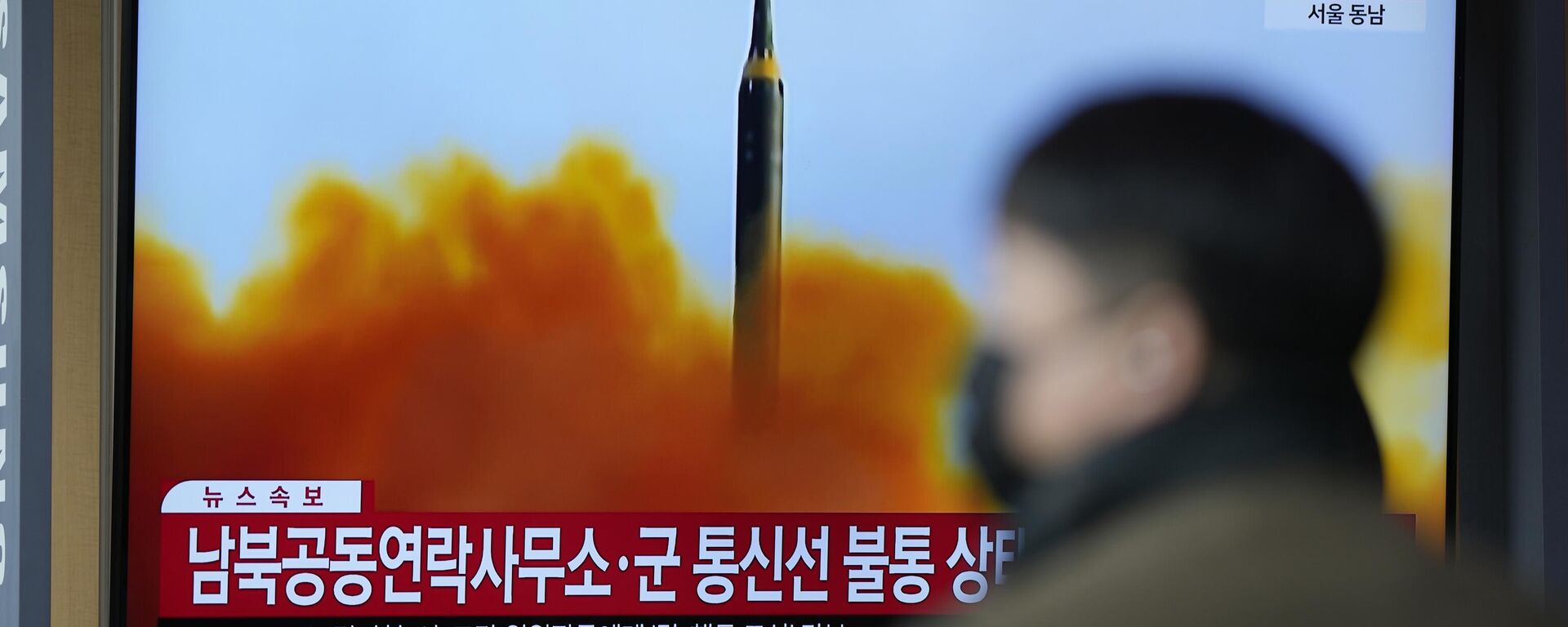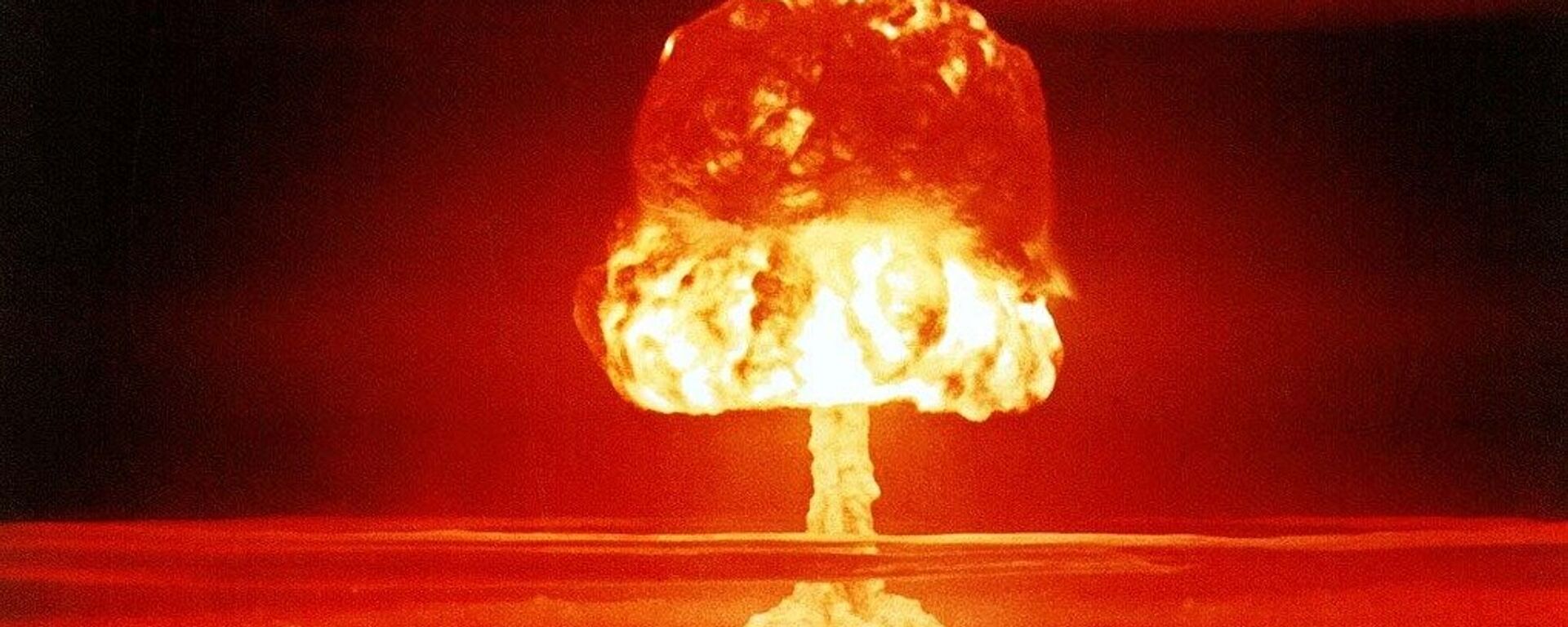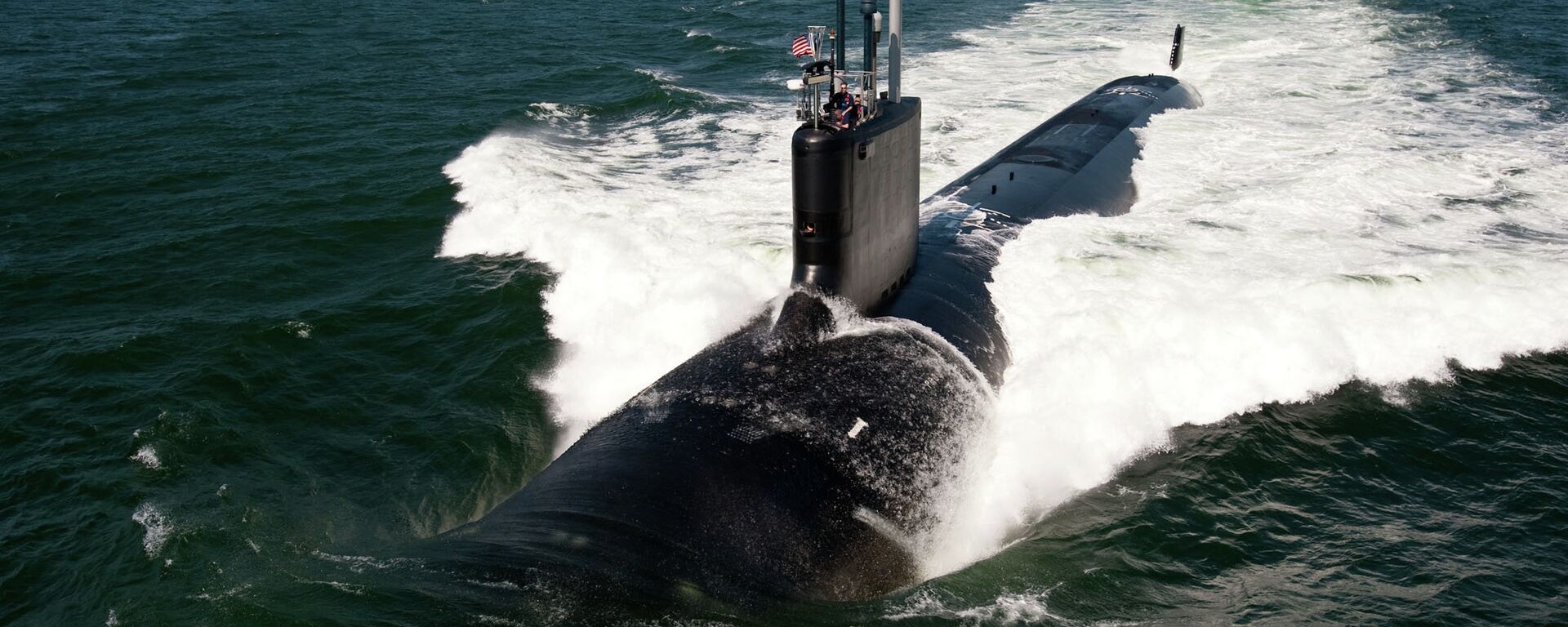https://sputnikglobe.com/20230713/what-is-north-koreas-new-solid-fuel-icbm-hwasong-18-missile-1111858631.html
What is North Korea's New Solid-Fuel ICBM Hwasong-18 Missile?
What is North Korea's New Solid-Fuel ICBM Hwasong-18 Missile?
Sputnik International
The Democratic People's Republic of Korea (DPRK) announced on Wednesday that it had successfully launched a solid-fuel intercontinental ballistic missile (ICBM), the Hwasong-18, the previous day. What's the DPRK's new wonder weapon?
2023-07-13T17:28+0000
2023-07-13T17:28+0000
2023-09-18T13:37+0000
kim jong un
pyongyang
icbms
sputnik explains
japan
pacific
korean people's army
white house
nato
asia-pacific region
https://cdn1.img.sputnikglobe.com/img/105786/05/1057860535_0:260:5000:3073_1920x0_80_0_0_8400c1e2e4a7d3b992e49998a15e91f3.jpg
The DPRK's General Missile Bureau conducted the test-fire of new-type ICBM Hwasong-18 on July 12, calling it part of the effort to bolster the nation's right to self-defense against a "disaster of a nuclear war" and to "thoroughly deter the dangerous military moves of the hostile forces," according to the North Korean state media. The nation's media dubbed the Hwasong-18 a "core weapon system of the strategic force" of the country.The report said that the military security situation on the Korean peninsula and in the region has dramatically worsened, blaming the US and "its vassal forces'" for unprecedented military provocations against the DPRK which have recently been intensified.What's the Range of the Hwasong-18 Missile?The Hwasong-18 missile reportedly reached an altitude of 6,648.4 kilometers and traveled 1,001.2 kilometers.How Long Does Hwasong-18 Take to Reach Its Target?The Hwasong-18 traveled for 4,491 seconds (about 74 minutes) before it "accurately" landed on the targeted area in the open waters off the East Sea of Korea. The missile's flight time has become the longest when compared to other rockets test-launched by the country. DPRK leader Kim Jong-un personally monitored the test fire, as per the nation's media.How Long Does It Take to Reach the US?The ballistic missile was launched at a high angle; if fired on a normal trajectory, it would be capable of traveling more than 12,875 km easily reaching the continental United States – as per South Korean military experts – presumably, in an hour and 14 minutes.When Was the Hwasong-18 Tested for the First Time?The Hwasong-18 is the first solid-fuelled ICBM developed by the DPRK. The weapon was unveiled on February 8 at the nation's military parade commemorating the 75th anniversary of the founding of the Korean People's Army.The first launch of the Hwasong-18 occurred on April 13. The ballistic missile flew toward the Sea of Japan for about 1,000 kilometers (621 miles) and landed outside Japan's exclusive economic zone. Photographs and video of the test showed the launch of a three-stage ICBM from a road-mobile transporter-erector-launcher (TEL) and indications of in-flight stage separation.What are Hwasong-18 Characteristics?According to some estimates, the Hwasong-18 weighs 55-60 tons. Judging from the missile's photographs, the rocket is 26.95 meters long; its first stage is 2.21 meters in diameter, while its second and third stages are 1.9 meters in diameter. Some observers suggested that the missile may be equipped with a single high-powered warhead or up to six multiple warheads.According to international experts, the Hwasong-18’s first-stage dimensions are consistent with those of the large solid rocket motor the nation reportedly tested last December 15, 2022. At the time, the DPRK media reported that Pyongyang conducted the first static (ground) test of a large solid-propellant rocket motor. Solid rocket motors allow the military to fire the weapon quicker compared to liquid-fueled missiles. Solids are also safer to handle in the field than liquids. In addition, it is easier to conceal solid ICBMs during land-mobile deployments. Solid-fueled ICBMs are also considered more stable.What Does Hwasong Mean?Hwasong translates as "Mars," which is both the name of the farthest terrestrial planet from the Sun and the name of the Roman god of rage and war.When Did North Korea Start Ballistic Missile Testing?Pyongyang started to test its intercontinental ballistic missiles in 2017. In that year, the DPRK first successfully test-launched two liquid propellant road-mobile ICBMs: the Hwasong-14 and Hwasong-15. A larger Hwasong-17 ICBM was displayed by Pyongyang at an October 2020 military parade. The Hwasong-17 was first test-launched in 2022. According to the US Congressional Research Service (CRS), the DPRK's newest ballistic missiles – including the Hwasong-14, Hwasong-15, Hwasong-17 (and Hwasong-18) – "demonstrate mobility, potency, precision, and have characteristics that make the missiles difficult to defeat in flight." The US observers admit that Pyongyang's tests have demonstrated growing success and "suggest a pattern designed to strengthen the credibility of [the nation's] regional nuclear deterrent strategy."What Was the US Reaction of US?Pyongyang's test launch coincided with the second day of the NATO summit in Vilnius. Following the DPRK's Wednesday's test, the White House stated that the launch "risks destabilizing the security situation in the region." Japanese Prime Minister Fumio Kishida called the launch "unacceptable" while speaking on the sidelines of the NATO summit. South Korea joined the chorus of Pyongyang's critics.For its part, the DPRK refers to the ongoing military buildup in the Asia-Pacific region spearheaded by the US, intensified military drills between US, South Korean and Japanese forces and militaristic rhetoric from Seoul.For its part, the US has bolstered its trilateral AUKUS military alliance with the UK and Australia and brought focus on further enhancement of the INDOPACOM missions. On April 18, 2023, Admiral John C. Aquilino, United States Navy Commander, US Indo-Pacific Command, testified before the US House Armed Services Committee emphasizing the necessity to step up deterrence in the Asia-Pacific region specifically against China, Russia, and the Democratic People's Republic of Korea (DPRK).
https://sputnikglobe.com/20230713/watch-north-koreas-newest-hwasong-18-icbm-in-action-1111847929.html
https://sputnikglobe.com/20230712/north-korea-fires-unidentified-ballistic-missile-toward-sea-of-japan-1111823571.html
https://sputnikglobe.com/20230713/us-reconnaissance-planes-violated-n-koreas-airspace-over-30-times-in-july-1111847512.html
https://sputnikglobe.com/20230713/report-us-s-korea-allegedly-planning-to-discuss-use-of-nukes-against-n-korea-1111843743.html
https://sputnikglobe.com/20230607/why-aukus-nuclear-sub-deal-will-stir-up-pacific-into-ocean-of-storms-1110982350.html
pyongyang
japan
pacific
australia
north korea
Sputnik International
feedback@sputniknews.com
+74956456601
MIA „Rossiya Segodnya“
2023
News
en_EN
Sputnik International
feedback@sputniknews.com
+74956456601
MIA „Rossiya Segodnya“
Sputnik International
feedback@sputniknews.com
+74956456601
MIA „Rossiya Segodnya“
hwasong-18 icbm, hwasong-18, hwasong 18, hwasong-18 intercontinental ballistic missile, how large is an icbm hwasong 18, icbm size, how to stop icbm, north korea launches intercontinental ballistic missile, north korean missile us, north korea nuclear weapons, north korea icbm, hwasong-18 range, hwasong-18 launch, hwasong-18 blast radius, hwasong-18 intercontinental ballistic missiles, hwasong-18 missile, hwasong-18 solid-fuel icbm, hwasong-18 specifications
hwasong-18 icbm, hwasong-18, hwasong 18, hwasong-18 intercontinental ballistic missile, how large is an icbm hwasong 18, icbm size, how to stop icbm, north korea launches intercontinental ballistic missile, north korean missile us, north korea nuclear weapons, north korea icbm, hwasong-18 range, hwasong-18 launch, hwasong-18 blast radius, hwasong-18 intercontinental ballistic missiles, hwasong-18 missile, hwasong-18 solid-fuel icbm, hwasong-18 specifications
What is North Korea's New Solid-Fuel ICBM Hwasong-18 Missile?
17:28 GMT 13.07.2023 (Updated: 13:37 GMT 18.09.2023) The Democratic People's Republic of Korea (DPRK) announced on Wednesday that it had successfully launched a solid-fuel intercontinental ballistic missile (ICBM), the Hwasong-18, the previous day. What's the DPRK's new wonder weapon?
The DPRK's General Missile Bureau conducted the test-fire of new-type ICBM Hwasong-18 on July 12, calling it part of the effort to bolster the nation's right to self-defense against a "disaster of a nuclear war" and to "thoroughly deter the dangerous military moves of the hostile forces," according to the North Korean state media. The nation's media dubbed the Hwasong-18 a "core weapon system of the strategic force" of the country.
The report said that the military security situation on the Korean peninsula and in the region has dramatically worsened, blaming the US and "its vassal forces'" for unprecedented military provocations against the DPRK which have recently been intensified.
What's the Range of the Hwasong-18 Missile?
The Hwasong-18 missile reportedly reached an altitude of 6,648.4 kilometers and traveled 1,001.2 kilometers.
How Long Does Hwasong-18 Take to Reach Its Target?
The Hwasong-18 traveled for 4,491 seconds (about 74 minutes) before it "accurately" landed on the targeted area in the open waters off the East Sea of Korea. The missile's flight time has become the longest when compared to other rockets test-launched by the country. DPRK leader Kim Jong-un personally monitored the test fire, as per the nation's media.
How Long Does It Take to Reach the US?
The ballistic missile was launched at a high angle; if fired on a normal trajectory, it would be capable of traveling more than 12,875 km easily reaching the continental United States – as per South Korean military experts – presumably, in an hour and 14 minutes.
When Was the Hwasong-18 Tested for the First Time?
The Hwasong-18 is the first solid-fuelled ICBM developed by the DPRK. The weapon was unveiled on February 8 at the nation's military parade commemorating the 75th anniversary of the founding of the Korean People's Army.
The first launch of the Hwasong-18 occurred on April 13. The ballistic missile flew toward the Sea of Japan for about 1,000 kilometers (621 miles) and landed outside Japan's exclusive economic zone. Photographs and video of the test
showed the launch of a three-stage ICBM from a road-mobile transporter-erector-launcher (TEL) and indications of in-flight stage separation.
What are Hwasong-18 Characteristics?
According to some estimates, the Hwasong-18 weighs 55-60 tons. Judging from the missile's photographs, the rocket is 26.95 meters long; its first stage is 2.21 meters in diameter, while its second and third stages are 1.9 meters in diameter. Some observers suggested that the missile may be equipped with a single high-powered warhead or up to six multiple warheads.
According to international experts, the Hwasong-18’s first-stage dimensions are consistent with those of the large solid rocket motor the nation reportedly tested last December 15, 2022. At the time, the DPRK media reported that Pyongyang conducted the first static (ground) test of a large solid-propellant rocket motor. Solid rocket motors allow the military to fire the weapon quicker compared to liquid-fueled missiles. Solids are also safer to handle in the field than liquids. In addition, it is easier to conceal solid ICBMs during land-mobile deployments. Solid-fueled ICBMs are also considered more stable.
Hwasong translates as "Mars," which is both the name of the farthest terrestrial planet from the Sun and the name of the Roman god of rage and war.
When Did North Korea Start Ballistic Missile Testing?
Pyongyang
started to test its intercontinental ballistic missiles in 2017. In that year, the DPRK first successfully test-launched two liquid propellant road-mobile ICBMs: the Hwasong-14 and Hwasong-15. A larger Hwasong-17 ICBM was displayed by Pyongyang at an October 2020 military parade. The Hwasong-17 was first test-launched in 2022.
According to the US Congressional Research Service (CRS), the DPRK's newest ballistic missiles – including the Hwasong-14, Hwasong-15, Hwasong-17 (and Hwasong-18) – "demonstrate mobility, potency, precision, and have characteristics that make the missiles difficult to defeat in flight." The US observers admit that Pyongyang's tests have demonstrated growing success and "suggest a pattern designed to strengthen the credibility of [the nation's] regional nuclear deterrent strategy."
What Was the US Reaction of US?
Pyongyang's test launch coincided with the second day of the NATO summit in Vilnius. Following the DPRK's Wednesday's test, the White House stated that the launch "risks destabilizing the security situation in the region." Japanese Prime Minister Fumio Kishida called the launch "unacceptable" while speaking on the sidelines of the NATO summit. South Korea joined the chorus of Pyongyang's critics.
For its part, the DPRK refers to the ongoing military buildup in the Asia-Pacific region spearheaded by the US, intensified military drills between US, South Korean and
Japanese forces and militaristic rhetoric from Seoul.
Last month, the Japanese Defense Ministry announced a plan to create a new surface-to-ship guided cruise missile as part of its broader strategy to "deter" China and the Democratic People's Republic of Korea (DPRK), per US military observers. Last December Japan passed a record defense budget for the 2023 fiscal year. In addition to the aforementioned anti-ship cruise missiles, Tokyo doubled down on the development of aircraft carriers – such as the Izumo class JS Kaga (DDH-184) – and hypersonic missiles.
For its part, the US has bolstered its trilateral AUKUS military alliance with the UK and Australia and brought focus on further enhancement of
the INDOPACOM missions. On April 18, 2023, Admiral John C. Aquilino, United States Navy Commander, US Indo-Pacific Command, testified before the US House Armed Services Committee emphasizing the necessity to step up deterrence in the Asia-Pacific region specifically against China, Russia, and the Democratic People's Republic of Korea (DPRK).






